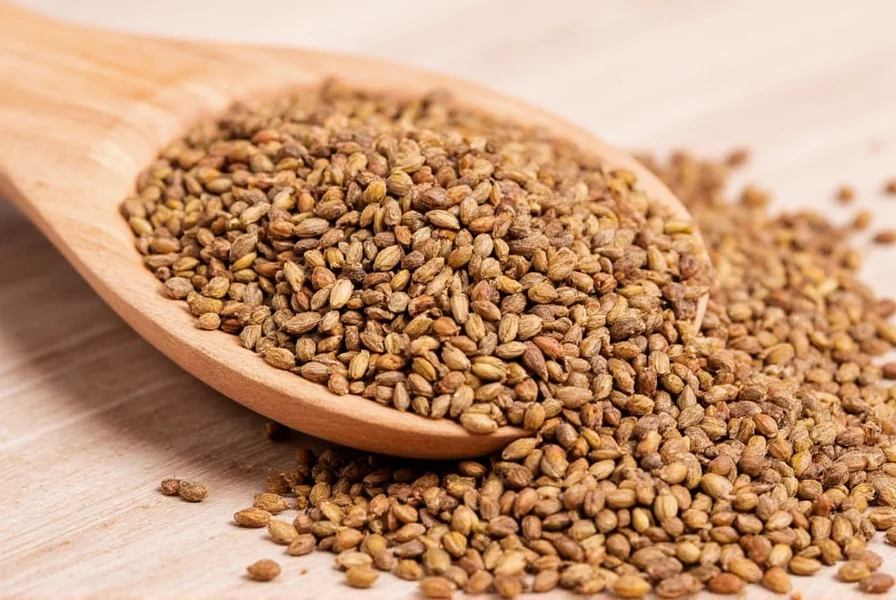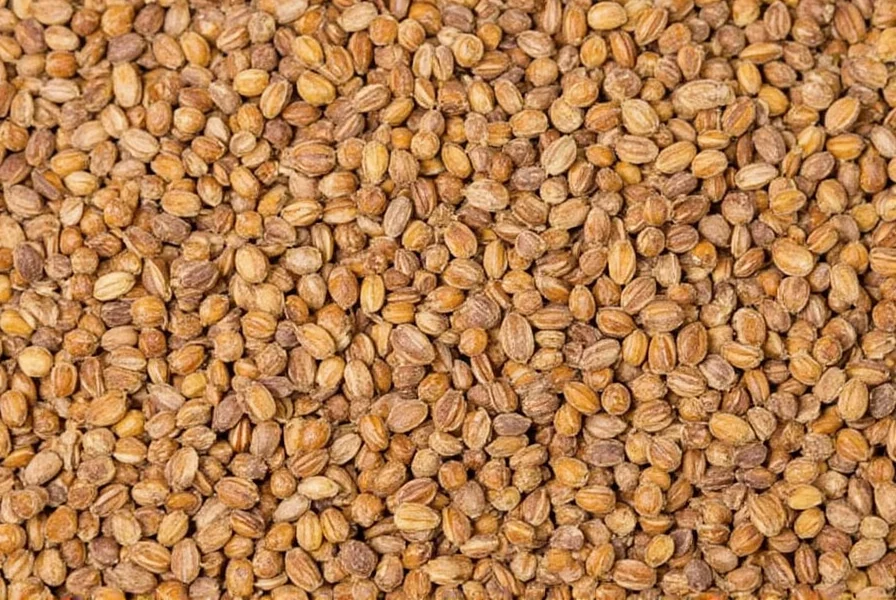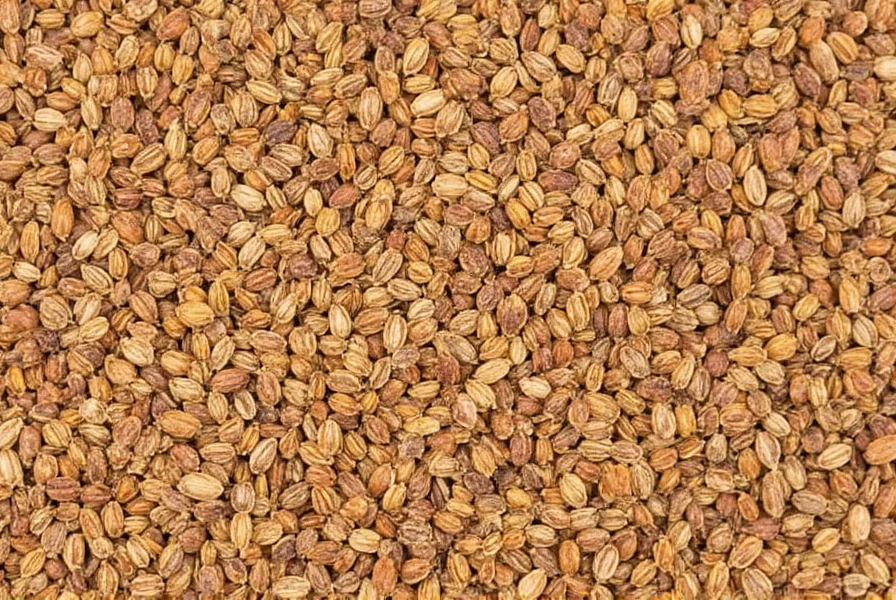Cumin seeds (Cuminum cyminum) represent one of the world's oldest and most widely used spices, with archaeological evidence dating their culinary use back to ancient Egyptian and Indus Valley civilizations. These crescent-shaped seeds, measuring approximately 3-6mm in length, grow in clusters on the flowering tops of the cumin plant, which thrives in warm Mediterranean and Middle Eastern climates. Unlike many spices that lose potency when ground, whole cumin seeds maintain their complex flavor profile for extended periods when stored properly, making them a valuable addition to any well-equipped kitchen.
Botanical Background and Global Production
The cumin plant belongs to the Apiaceae family, sharing botanical relations with parsley, coriander, and caraway. This annual herb grows to about 30-50cm in height and produces small white or pink flowers that develop into the characteristic seed pods. India remains the largest producer and consumer of cumin seeds globally, accounting for approximately 60% of worldwide production, followed by Iran, Turkey, and Syria. The specific terroir where cumin is grown significantly impacts its flavor profile, with Indian cumin typically exhibiting a stronger, hotter character compared to the milder, lemony notes of Middle Eastern varieties.
Nutritional Profile of Cumin Seeds
Just one tablespoon (6g) of cumin seeds delivers impressive nutritional value, making them more than just a flavor enhancer. They're particularly rich in iron, providing approximately 23% of the daily recommended intake, which explains their traditional use in addressing anemia. Cumin seeds also contain significant amounts of manganese, magnesium, and calcium, along with phytochemicals like cuminaldehyde that contribute to their health-promoting properties.
| Nutrient | Per 1 Tbsp (6g) | % Daily Value |
|---|---|---|
| Calories | 23 | 1% |
| Iron | 4.3mg | 24% |
| Manganese | 0.3mg | 14% |
| Magnesium | 26mg | 6% |
| Dietary Fiber | 1.6g | 6% |
Evidence-Based Health Benefits of Cumin Seeds
Modern research continues to validate many traditional uses of cumin seeds. Studies published in the Journal of Ethnopharmacology demonstrate that cumin's active compounds, particularly cuminaldehyde and thymoquinone, exhibit significant antioxidant activity that helps combat oxidative stress. Research from Shahid Beheshti University of Medical Sciences indicates regular consumption of cumin seeds may improve blood lipid profiles and support healthy blood sugar levels, making them potentially beneficial for metabolic health.
The digestive benefits of cumin seeds have substantial scientific backing. A clinical trial in the Indian Journal of Pharmacology found that participants who consumed cumin extract experienced significantly improved digestion and reduced symptoms of indigestion compared to the control group. This aligns with traditional Ayurvedic medicine practices that have used cumin seeds for centuries to support digestive health.
Culinary Applications and Flavor Enhancement
Understanding how to use cumin seeds in cooking separates novice cooks from seasoned culinary enthusiasts. The key to unlocking cumin's full flavor potential lies in proper toasting technique. Dry toast whole seeds in a skillet over medium heat for 1-2 minutes until fragrant and slightly darker, taking care not to burn them. This simple step transforms their flavor profile, releasing essential oils that create a more complex, nutty aroma.
Cumin seeds work particularly well in:
- Indian curries and dals (add at the beginning of cooking for deeper flavor)
- Middle Eastern spice blends like baharat and za'atar
- Mexican and Tex-Mex dishes (often paired with coriander seeds)
- Roasted vegetable preparations (toss with olive oil before roasting)
- Homemade breads and flatbreads (sprinkle on top before baking)

Cumin Seeds vs. Ground Cumin: When to Use Each
While convenient, ground cumin loses its volatile oils more quickly than whole seeds, resulting in diminished flavor intensity. Whole cumin seeds maintain their potency for 3-4 years when stored properly, compared to 6-12 months for ground cumin. For dishes where cumin plays a starring role (like Indian curries or Middle Eastern stews), whole seeds toasted and ground fresh will deliver superior flavor. Ground cumin works well in spice rubs, marinades, or recipes where even distribution is more important than maximum flavor impact.
Optimal Storage Methods for Maximum Freshness
The proper storage for cumin seeds significantly extends their shelf life and preserves flavor. Store whole cumin seeds in an airtight container away from light, heat, and moisture. A dark glass jar in a cool pantry maintains quality for up to four years, while refrigeration can extend this to five years. Avoid storing near the stove or oven, as temperature fluctuations accelerate flavor degradation. To test freshness, crush a few seeds between your fingers—if the aroma is weak or musty, it's time to replace your supply.

Effective Substitutes When Cumin Seeds Are Unavailable
When you need cumin seeds substitutes for a recipe, consider these alternatives based on your specific culinary needs:
- Caraway seeds (use 3/4 quantity): Similar earthy flavor with more pronounced anise notes
- Ground cumin (use 3/4 quantity): Less complex but functional in a pinch
- Fennel seeds (use 1/2 quantity): Sweeter profile that works in Mediterranean dishes
- Coriander seeds (use equal quantity): Milder citrus notes that complement similar spice profiles
Historical Significance and Cultural Uses
Cumin seeds have played significant roles beyond the kitchen throughout history. Ancient Egyptians used them both as a spice and in the mummification process, while Roman soldiers carried cumin for good luck in battle. In traditional Indian medicine (Ayurveda), cumin seeds have been prescribed for digestive issues, respiratory conditions, and as a galactagogue to support lactation. The seeds' preservative qualities made them valuable before refrigeration, explaining their prevalence in cuisines from Morocco to Mexico.
Frequently Asked Questions
What are the primary health benefits of consuming cumin seeds regularly?
Regular consumption of cumin seeds offers several evidence-based health benefits. They're exceptionally rich in iron (providing about 24% of daily needs per tablespoon), which supports healthy blood function. Research shows cumin seeds contain potent antioxidants like cuminaldehyde that combat oxidative stress. Clinical studies indicate they may improve digestion, support healthy blood sugar levels, and enhance lipid profiles. The dietary fiber content also promotes gut health and regularity.
How should I properly toast cumin seeds to maximize flavor?
To properly toast cumin seeds, use a dry skillet over medium heat. Add seeds in a single layer and toast for 1-2 minutes, shaking the pan frequently, until they become fragrant and slightly darker in color. The seeds should emit a warm, nutty aroma but not smoke or darken significantly. Immediately transfer to a cool plate to stop the cooking process. Over-toasting creates bitterness, so err on the side of under-toasting if uncertain. For best results, grind toasted seeds just before use.
What's the difference between cumin seeds and ground cumin in cooking applications?
Whole cumin seeds maintain their essential oils and flavor compounds longer than ground cumin, which loses potency within 6-12 months. Seeds provide a more complex, textured flavor when toasted properly and work best added early in cooking to infuse dishes with deep flavor. Ground cumin offers convenience and even distribution but lacks the nuanced flavor of freshly toasted seeds. For dishes where cumin is a primary flavor (like Indian curries), whole seeds toasted and ground fresh deliver superior results compared to pre-ground cumin.
How long do cumin seeds last when stored properly?
When stored properly in an airtight container away from light, heat, and moisture, whole cumin seeds maintain optimal flavor for 3-4 years. Refrigeration can extend this to 5 years. The key is using opaque, airtight containers—dark glass jars work exceptionally well. To test freshness, crush a few seeds between your fingers; fresh seeds will release a strong, warm, citrusy aroma. If the scent is weak or musty, the seeds have lost their potency and should be replaced.











 浙公网安备
33010002000092号
浙公网安备
33010002000092号 浙B2-20120091-4
浙B2-20120091-4